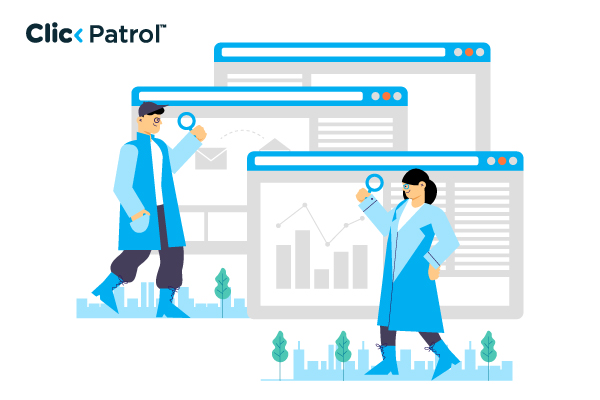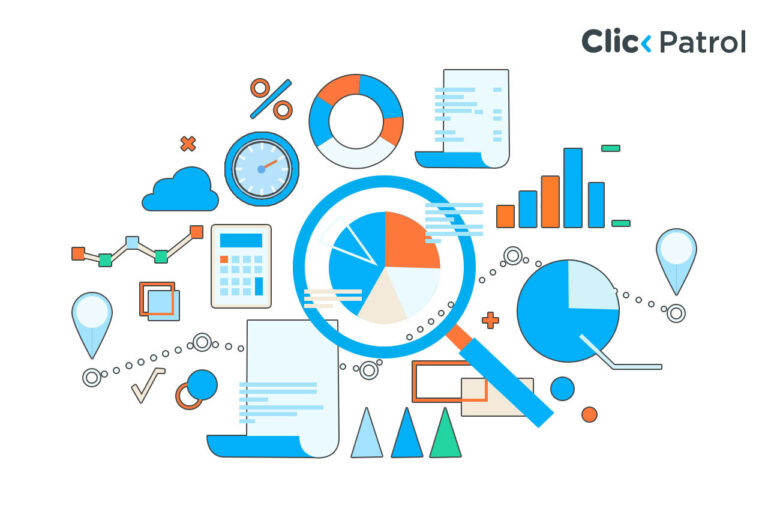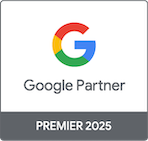- Display Network: Yes, through placement exclusions.
- Search Partners: No, but you can opt out of the Search Partner network entirely.
What are Google Partner Sites? How they work and how to use them in your ad campaigns
Abisola Tanzako | May 25, 2025

Table of Contents
- What are Google Partner Sites?
- Types and examples of Google Partner Sites
- Benefits of Google Partner Sites
- Challenges of Google Partner Sites
- How to exclude low-performing Google Partner Sites
- Review placement reports:
- Identify underperforming placements:
- Exclude specific placements:
- Use negative keywords (for Search Partners):
- Monitor and adjust regularly:
- Consider disabling search or display partners (Optional):
- Tips for optimizing and managing Google partner site performance
- Elevate your ad strategy with Google partner networks
Google Partner Sites reach over 90% of global internet users (Think with Google, 2024). Beyond its platforms, such as Search and YouTube, Google leverages a vast network of partner sites, third-party websites, apps, and platforms that display ads through the Google Display Network (GDN).
This network spans over 2 million sites and reaches more than 90% of internet users. It also includes search partners that drive additional, often more cost-effective, traffic.
This guide explains what partner sites are, how ads appear, and how to manage placements effectively.
What are Google Partner Sites?
Google Partner Sites are third-party websites, apps, and online platforms that display ads through Google’s Search and Display Networks. Google does not own these sites, but it works with them to serve ads in exchange for a share of the revenue.
Partners include search engines (like Ask.com), e-commerce platforms (like Walmart’s product listings), blogs, news outlets, forums, and mobile apps.
Ads appear as text, image, or video content targeted based on user behavior or page context. Partner sites offer advertisers a broader reach and often lower cost-per-click (CPC) rates. For site owners, they provide a monetization avenue by hosting ads.
Types and examples of Google Partner Sites
Google’s partner ecosystem is divided into two main categories:
Search partners:
Search Partners are third-party websites and apps that use Google’s search technology to power their internal search engines. These sites display Google search ads alongside their search results, just like Google Search.
This allows advertisers to reach users searching for information on non-Google platforms. Examples: Ask.com, AOL Search, Amazon product pages, Walmart’s internal search, YellowPages.com
Display Network Partners:
Display Network Partners include over 2 million websites, apps, and videos that host Google’s display ads. These ads are often presented in text, image, video, or interactive formats and are displayed to users based on their browsing behavior or the content they interact with.
This type of advertising helps brands reach users while they browse the web, read articles, or play mobile games. Examples: CNN.com, TechCrunch, Forbes, Candy Crush, Subway Surfers, W3Schools, Khan Academy
Benefits of Google Partner Sites
The benefits of Google Partner Sites include:
- Wider reach: Partner sites extend your visibility across over 2 million websites and apps, reaching more than 90% of internet users globally.
- Extra search volume: Search partners help capture traffic from platforms outside Google Search, potentially boosting impressions by 10–20%.
- Lower CPC: Ads on partner sites often cost 20–30% less per click than those on Google’s leading platforms (Source: WordStream).
- Contextual relevance: Google utilizes algorithms to match ads with relevant environments, thereby enhancing engagement and conversions.
Challenges of Google Partner Sites
Although Google partner sites have several benefits, there are some challenges to consider:
- Lower conversion rates: Partner site traffic, especially from the Display Network, has lower intent and, consequently, lower conversion rates compared to high-intent Google Search users.
- Limited transparency: Advertisers need limited visibility into which individual Search Partner sites drive traffic. This requires limited report granularity, which could make it difficult to detect and optimize low-performing placements.
- Ad placement risks: Partner site quality varies significantly. Without manual exclusion from a site or category filtering, ads may appear on low-quality or non-relevant sites, potentially harming the brand’s reputation.
How to exclude low-performing Google Partner Sites
Excluding low-performing Google Partner Sites can help improve your ad campaign performance and ROI by preventing your ads from showing on sites that are not delivering meaningful results.
Here is a clear and simple breakdown of how to do it effectively:
Review placement reports:
Go to your Google Ads dashboard and check the Placement Report under your campaign settings. This report shows where your ads appeared across partner sites and apps, along with performance metrics such as impressions, clicks, CTR, and conversions.
Identify underperforming placements:
Look for sites with:
- High impressions but low click-through rates (CTR)
- High CTR but no conversions
- High bounce rates or short average session durations (if connected to Google Analytics)
Exclude specific placements:
Once you have identified low-performing sites:
- Navigate to the campaign or ad group level
- Click on Placements > Exclusions
- Add the website URLs or app IDs you want to block from showing your ads
Use negative keywords (for Search Partners):
If you see poor results from search partners, adding negative keywords can help refine the type of queries your ads appear on.
Monitor and adjust regularly:
Exclusions are not a one-time fix. Check your placement reports on a weekly or monthly basis to identify new underperformers and update your exclusions accordingly.
Consider disabling search or display partners (Optional):
If performance is consistently poor and you are not getting value from partner sites, you can:
- Uncheck “Include Google search partners” or
- Opt out of the Display Network (though this limits your reach)
To do this:
- Go to campaign settings
- Under “Networks,” select or deselect the checkboxes as needed.
Tips for optimizing and managing Google partner site performance
The tips for optimizing and managing Google partner site performance include:
- Start with data: To make informed decisions, begin by analyzing data. A/B testing is an effective way to compare campaign performance with and without Search Partners enabled. This will help determine if the additional traffic from partner sites is valuable to your overall campaign goals.
- Segment reporting: Google Ads enables you to segment your campaign performance by network, including Search, Search Partners, and Display Network. This segmentation enables you to pinpoint which traffic sources yield the best return on investment (ROI), allowing you to allocate your budget more effectively.
- Placement exclusions: Use the “Where Ads Showed” report in your Display campaign settings to monitor which sites or apps your ads appear on. Excluding poorly performing websites or apps ensures that your ads appear only in places that drive better results, thereby increasing the overall effectiveness and relevance of your ads.
- Brand safety settings: Maintaining a positive reputation is crucial to brand safety. Google Ads offers category exclusions that allow you to block ads from appearing next to sensitive or inappropriate content. Enabling these settings can protect your brand’s image across the partner network.
- Strategically lower bids: If specific partner sites are underperforming in traffic or engagement, consider lowering your maximum CPC bids for those specific sites. Additionally, you can use Target CPA bidding to manage costs while achieving conversions, ensuring your ads stay within budget while optimizing for better results.
Elevate your ad strategy with Google partner networks
Google Partner Sites offer a robust extension of the Google Ads ecosystem, allowing advertisers to reach a broader audience across millions of websites, apps, and other platforms.
While they offer benefits such as lower CPCs, greater reach, and contextual targeting, they also require strategic management to prevent issues like lower conversion rates or unwanted placements.
You can maximize their potential by leveraging tools like A/B testing, segment reporting, and exclusion settings. Whether building brand awareness or optimizing for ROI, partner sites can be a savvy addition to your strategy.
Frequently Asked Questions
-
Can I opt out of individual Google Partner Sites?
-
Do partner sites perform as well as Google Search?
Not always.
Partner sites will have lower CPCs but potentially lower conversion rates.
Compare using data.
-
Not always. Partner sites will have lower CPCs but potentially lower conversion rates. Compare using data.
Utilize the “Segment > Network (with search partners)” feature to break down performance data in your reports.






